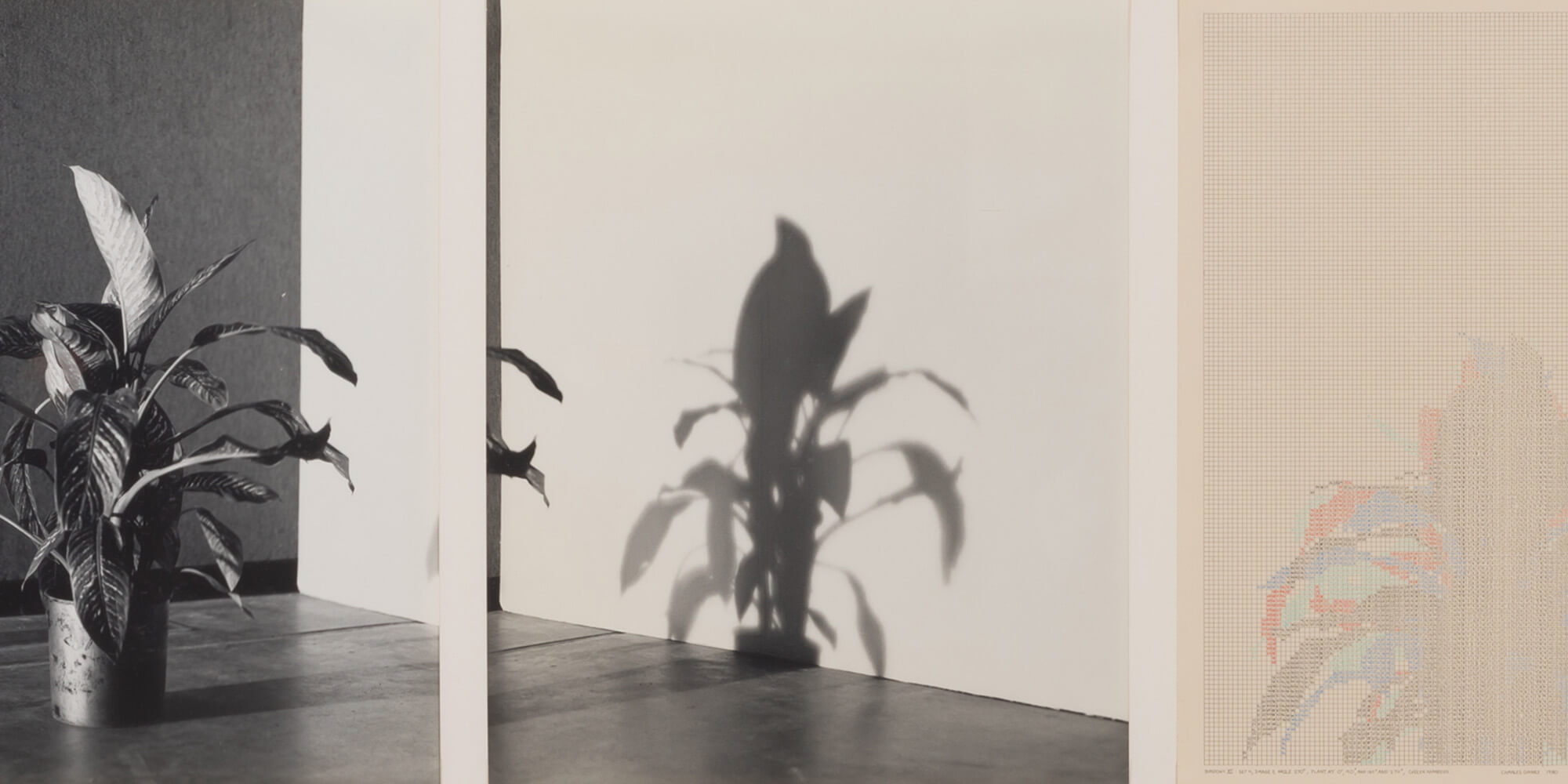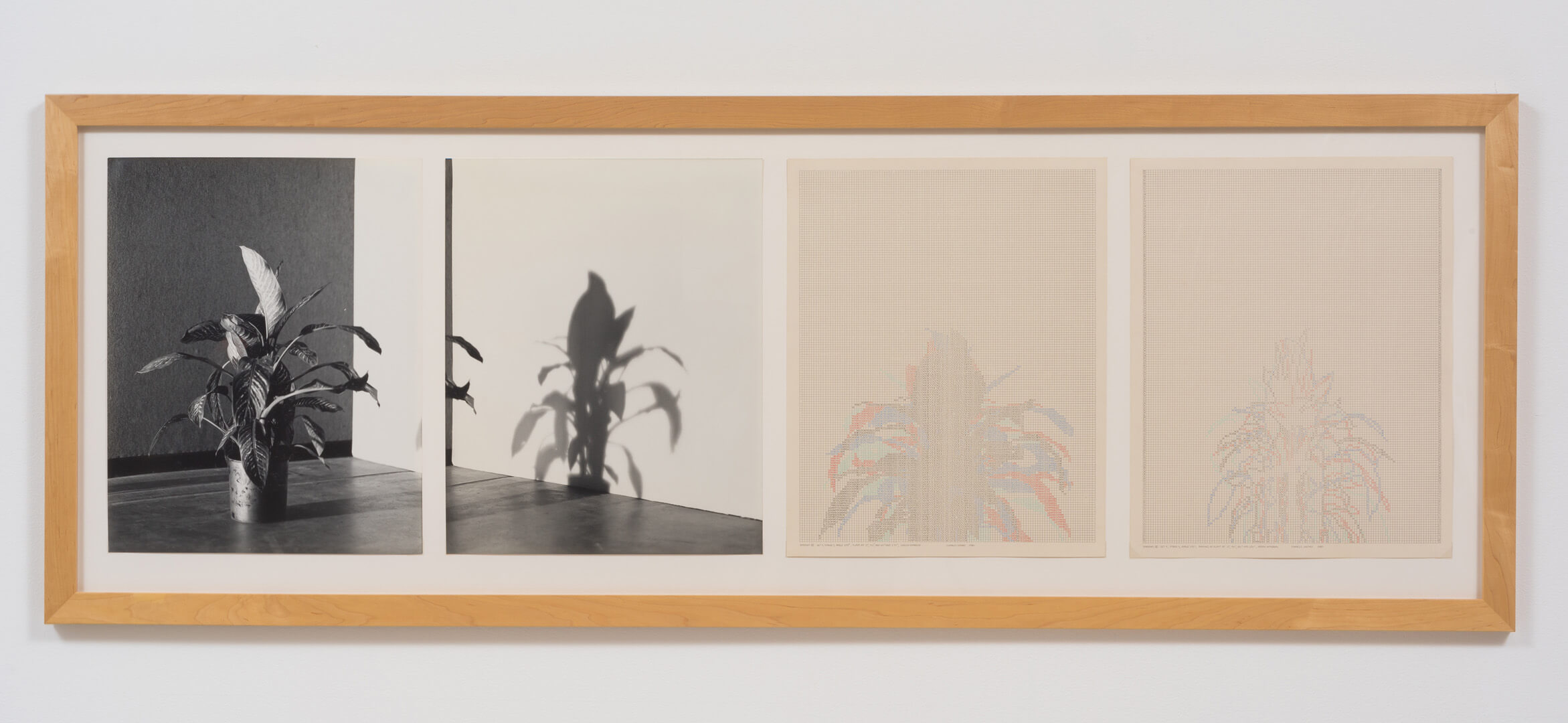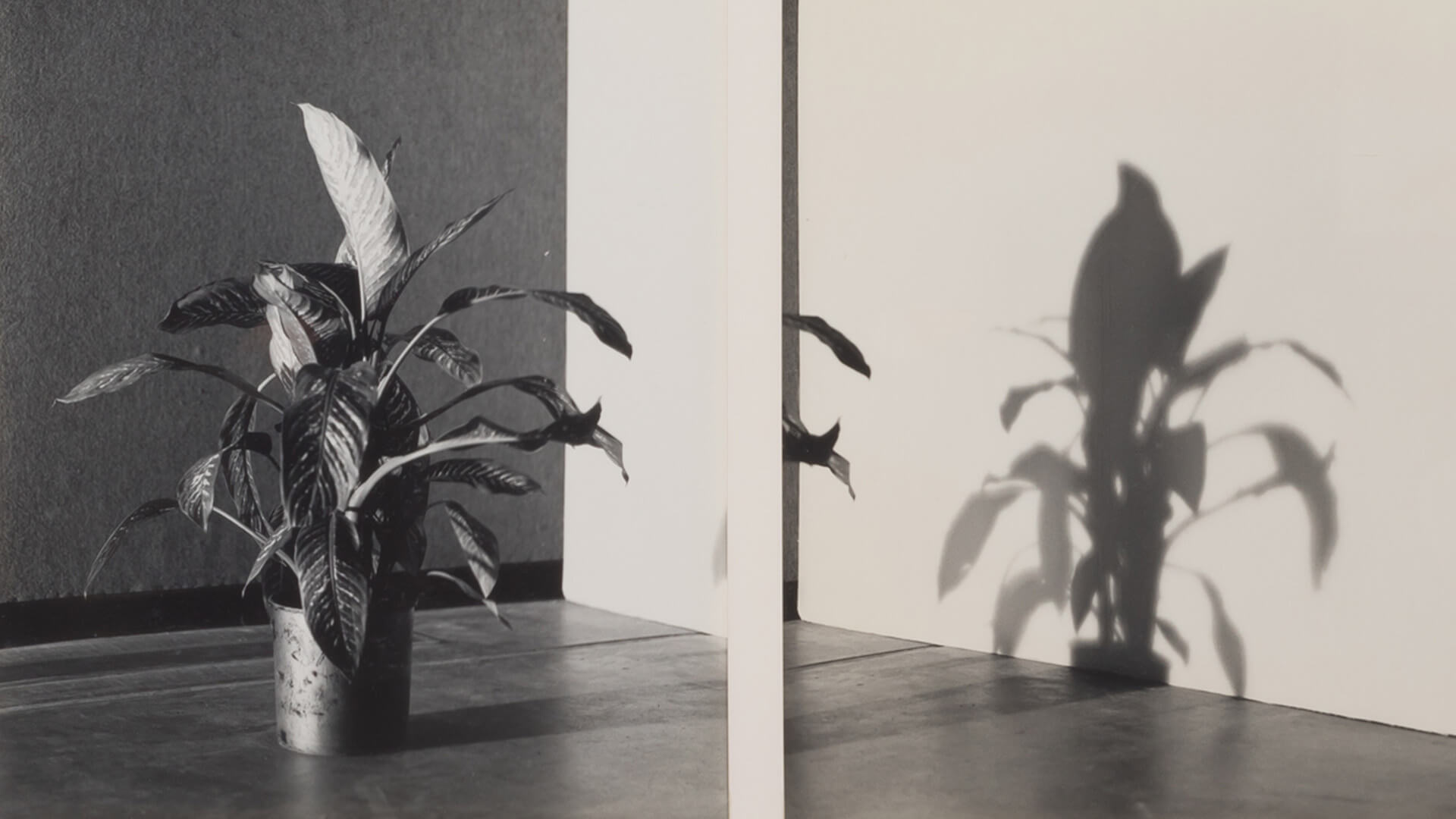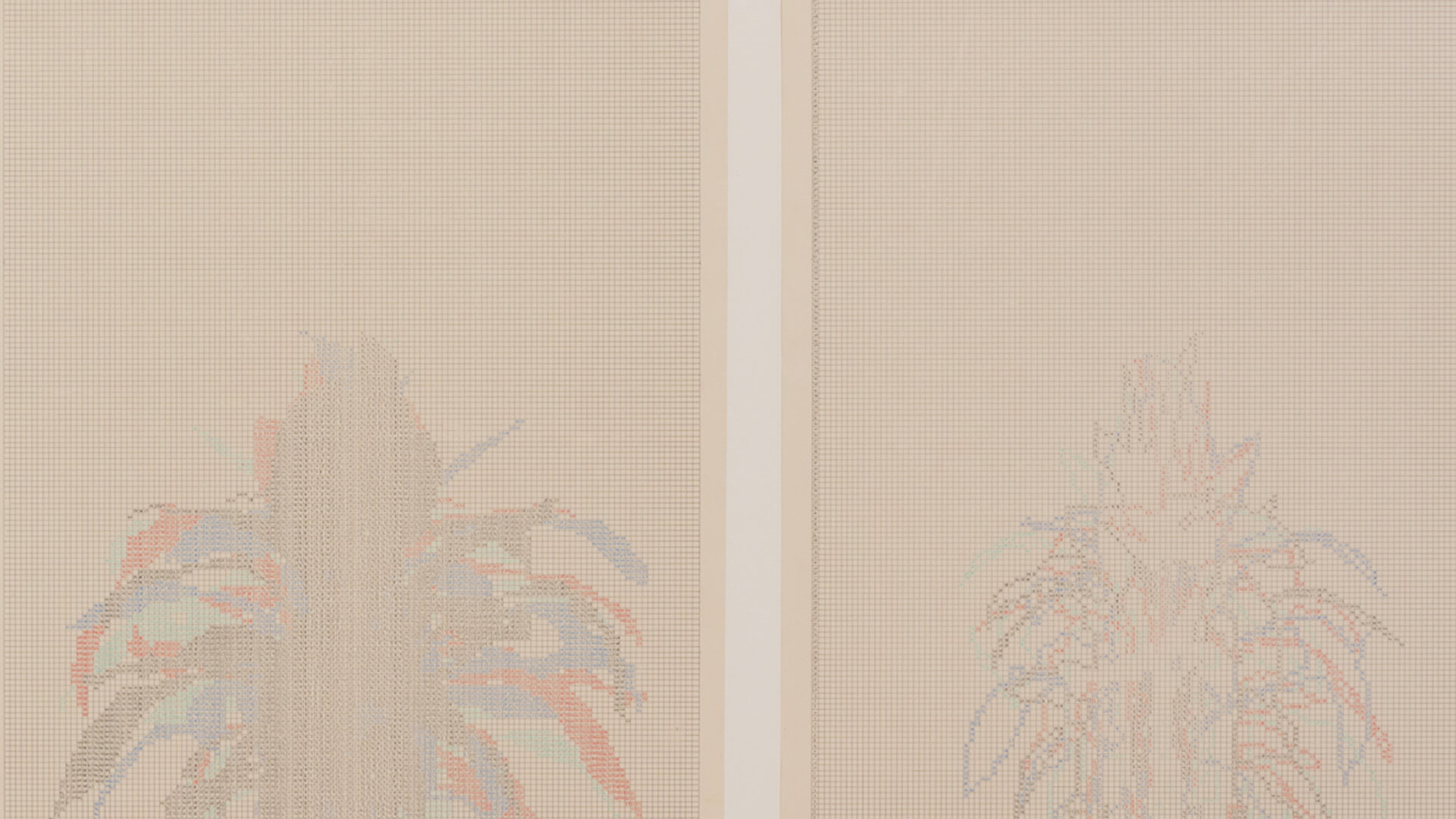
Charles Gaines
Shadows XI, Set 4

Shadows XI, Set 4
1980 Photographs, ink on paper, 4 sheets 50.8 x 40.6 cm / 20 x 16 in (each)

Similar to Charles Gaines's other early works, the ‘Shadows’ (1979-1980) series functions didactically by drawing attention to order and sequencing. As with his other grid-based and systems-based works, Gaines's process simultaneously produces both the content and the formal structure of the work, as photographs and drawings together create a self-reflexive record of his process. The drawings function as an indexical mark of the present and absent (previous) photographs, tracing the trajectory of the series as a whole. Taking the notion of the indexical even further, while the photographs themselves are traces of a real, factual circumstance, the shadows that are documented are themselves paradigmatic of the index's visual register.
‘‘Shadows’ is a series that is made up of groupings of four sets with each set comprised of two photographs and two drawings. Over the course of the series, I sequentially plotted contours of plants and their shadows on a numbered grid. For each group, I took a photograph of a standard houseplant and a photograph of its corresponding shadow in four different positions: 0 degrees, 90 degrees, 180 degrees, 270 degrees. This produced four photographs of the plant and four photographs of its shadows.’–Charles Gaines

Despite the systematic, ordering function of the numbers, the ‘Shadows’ explorations–and indeed the work at large–serve less as a measure of logical versus illogical than as an engagement with the nature of perception. While this idea includes the logic of composition, Gaines was more interested in how we see objects in the world, continuing his ongoing questioning of the essence, inherent nature, or stability of a given thing.

Charles Gaines
A pivotal figure in the field of Conceptual Art, Charles Gaines’ body of work engages formulas and systems that interrogate relationships between the objective and the subjective realms. Using a generative approach to create series of works in a variety of mediums, he has built a bridge between the early conceptual artists of the 1960s and 1970s and subsequent generations of artists pushing the limits of conceptualism today.